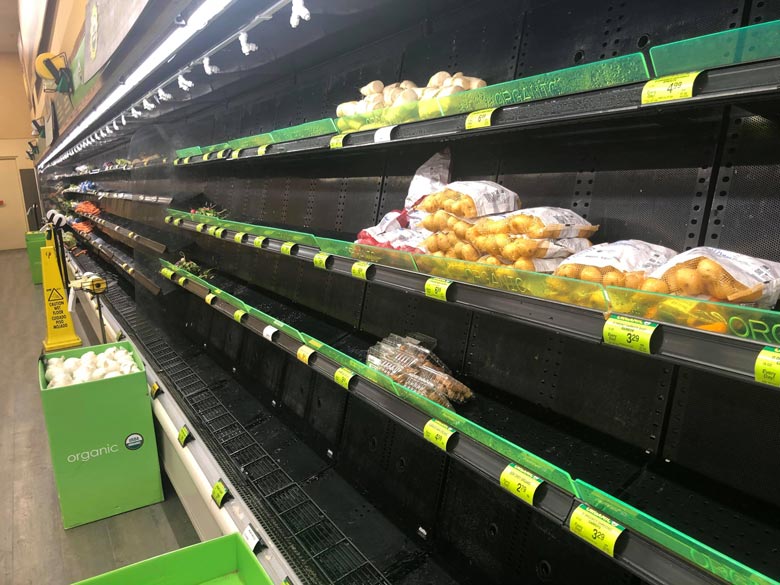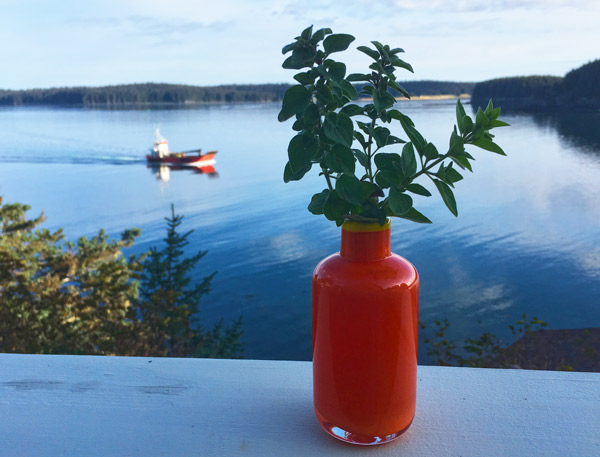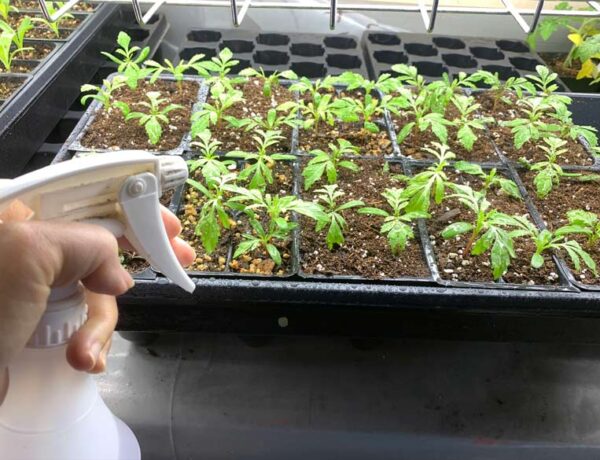It’s March. Now it’s time to get down to business, the business of starting seeds. Seed-starting is not only a timely topic—as people plan ahead for the growing season— but it’s a popular one.
If, after presenting four Zoom workshops (my next one comes up this week), on the topic of starting your own seedlings, I can tell you first hand that there are a lot of folks out there buying seeds and setting up lights and poling holes in the bottom of yogurt containers.
The other day, I ran across some interesting statistics from Wakefield Research: With the surge in at-home cooking, many Americans are discovering the joy of using fresh items from their gardens. In fact:
[perfectpullquote align=”full” bordertop=”false” cite=”” link=”” color=”” class=”” size=””]Two-thirds (67%) of adults are growing or plan to grow edible plants, including vegetables (52%), herbs (33%), and fruits (31%).[/perfectpullquote]
I think the most revealing statistic is that two-thirds (67%) of adults are growing or plan to grow edible plants.
Many of you reading this column recall times in the past (most recently this January) where shelves in grocery stores were emptied of fruits and vegetables. I took this as a clear indicator (red flag) of how fragile the transportation system is.
In fact, it’s a global issue. The March 6 edition of The New York Times ran a telling article: ‘I’ve Never Seen Anything Like This’: Chaos Strikes Global Shipping. The byline: The pandemic has disrupted international trade, driving up the cost of shipping goods and adding a fresh challenge to the global economic recovery.
Back in Kodiak, many people were surprised to see the vacant shelves in our local stores. Katie Oliver expressed it this way: “I was disappointed to see these empty shelves, but it was also a reminder not to take for granted the supply chains and all the complexities that go into delivering fresh produce from other climates to Kodiak.
[This article was originally published in the Kodiak Daily Mirror, the hometown newspaper for Kodiak, Alaska. You can access the archive page for my past columns, written each week since 1986. One more thing… if you’re not happy with your composting efforts, then I invite you to discover your #1 composting mistake by taking my 60-second assessment here.].
Like many of us, Katie has learned to be flexible. “I’m accustomed to changing meal plans on the fly based on what is or isn’t available at Safeway or Costsavers.
“You can’t always make it to the store on barge days, and some days you have to be more imaginative. It’s important to me to include veggies or salads with every meal at home so that my kids grow up choosing vegetables and having healthy habits.”
This brings me to getting down to the business of starting your own seedlings so you can grow at least some of your own food and not be so dependent on what is brought to our island.
So, a few weeks ago, I shared this shortlist of some early-to-start seeds, with the corresponding time it takes to go from seed-sowing to transplanting size:
- 12 to 14 weeks: chives, oregano, mint, yarrow, parsley, pansies, lobelia.
- 10 to 12 weeks: celery, leeks, globe artichoke.
- 8 to 12 weeks: onion (bulbing types), green onion, thyme, feverfew, valerian, catnip, snapdragons, alyssum.
And how to determine the sowing date by counting backward with the number of weeks required to grow the transplants. For example (and I’m repeating this because it’s important) the sowing instructions found on the back of a seed packet for broccoli states: “Sow seeds 4 to 6 weeks before transplanting outside.”
Let’s say you want May 15 to be the day you plan to transplant seedlings outside. With May 15 as your target date, count backward 4 to 6 weeks, which gives you a sowing date of April 1. Mark your calendar!
Now let’s talk growing tips, beginning with these 3 must-haves:
- Containers
- Soil
- Temperature
In future columns, I will cover more care and feeding instructions.
Containers
To start seeds, most any container will do – From yogurt cups to “6-packs.” So long as it’s at least 3 inches deep to allow for root growth. All containers should be clean and have drainage holes.
That said, egg cartons and eggshells are too small. And I’m not a fan of peat pellets, meant to be a growing container and planting medium in one. When soaked in water, the pellets swell to seven times their size. Convenient, yes. But they are expensive and the mesh around the outside does not break down in our cool-ish soil which restricts root growth.
What soil is best?
For decades I followed the rule that seed-starting soil needed to be sterile. Otherwise, seedlings may develop “damping off” where they keel over at the soil line and die.
Then I read a recent column by Jeff Lowenfels, published in the Anchorage Daily News. He introduced, in Reader’s Digest terms, the rhizophagy cycle and how scientists are just beginning to understand how plants “eat.” One study revealed that plants extract up to 30% of their nitrogen needs from soil microbes through the rhizophagy cycle.
Curious to know more, I contacted Jeff.
“So, Jeff, does one really need to use sterile soil for starting seeds?
“No,” he replied, “the microbes in living soil are diverse enough to keep the fungi that cause damping-off in check.”
“Then, what IS the best living soil for starting seeds?”
“Compost is the best seed starting mix.”
Jeff Lowenfels, by the way, is the bestselling author of three books about the Soil Food Web and has the longest-running gardening column in the U.S.
How has this changed how I start seeds? To germinate seeds I start them in a soil-less mix (at least for now) and then when it’s time, I transplant them in a compost-rich mix.
Temperature
Remember the story of Goldilocks and the Three Bears? The general rule for seed starting is much the same: Not too warm and not too cold. In other words, start seeds warm but grow seedlings cool. Check the seed packet for the optimum soil temperature, but you’ll find that most seeds germinate best in warm, cozy soil but grow stouter and stronger in cooler temps.
For example, go ahead and germinate seeds in the warmth of your kitchen. Then after potting them up to larger containers, move them to a cooler place with light.
Next week, we’ll cover air, fertilizer, and the all-important topic of light!
Remember, you don’t have to get it perfect, you just have to get it growing!
Have a great week. Be safe!

++++++++++++++++++
P.S. It’s a project! I’m posting over 1,200 of my weekly gardening articles, which you can access here. And be sure to check out my special 6-page report: “220 Things You Can Compost”. To contact me by email: marion (at) marionowenalaska.com.





No Comments